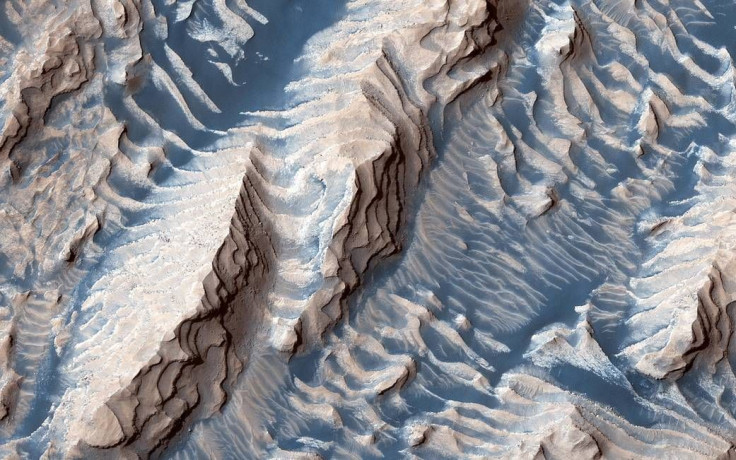NASA Mars Mission Mystery: Everything Scientists Can't Explain About Red Planet

Among all the other planets in the Solar System, humans are focusing on planet Mars. Not only is it one of the closest planet to us, but it is also considered to be a viable option to start a human colony.
This is why we have already spent years trying to study Earth’s cousin, with the hope that knowing more about it can someday give us a glimpse of what life could be outside of Earth. Among the facts that we know so far, we know that the atmosphere of Mars is about 100 times thinner than Earth's, and it is dominated by carbon dioxide.
Based on NASA's fact sheet, Mars' atmosphere consists of 95.32 percent of carbon dioxide, 2.7 percent of nitrogen, 1.6 percent of argon, 0.13 percent of oxygen, 0.08 percent of carbon monoxide and minor amounts of water, nitrogen oxide, krypton and xenon.
On the other hand, the Earth's atmosphere is composed of 78 percent nitrogen, 21 percent of oxygen, 1 percent argon and trace amounts of carbon dioxide, neon, helium, methane, krypton, hydrogen, xenon, ozone and carbon monoxide.
During the martian year, the barometric pressure on Mars is known to cycle up and down substantially as carbon dioxide freezes out and is then re‐released from polar caps. Despite this information, the Red Planet still shows us some surprising details. Here are some of the most baffling details that got scientists scratching their heads trying to figure out pertinent details about the Red Planet.
One of the latest mysteries is how Mars' atmosphere showcased odd levels of oxygen in the Gale Crater region. Based on the Journal of Geophysical Research, measurements of volume mixing ratios in Gale Crater are done using the Sample Analysis at Mars (SAM) quadrupole mass spectrometer, obtained over a period of nearly five years (three Mars years) from landing. The SAM QMS atmospheric measurements were taken periodically, with a cumulative coverage of four or five experiments per season on Mars.
This analysis gave scientists an observation that oxygen in the planet's atmosphere behaving in an unexpected manner. Oxygen has been observed to show significant seasonal and year‐to‐year variability. Oxygen rose by around 30 percent during spring and summer, dropping back to normal levels in autumn. This happened every year, but since the amount by which the oxygen rises varies from year to year, something mysterious is happening with the oxygen's behavior. Researchers believe that these findings suggest an unknown atmospheric or surface process at work. As of now, the reason is unknown. What could be the possible reasons behind this mystery?
Melissa Trainer, a planetary scientist at NASA's Goddard Space Flight Center, said that she and her co-scientists are struggling to explain the situation. "The fact that oxygen behavior isn't perfectly repeatable every season makes us think that it's not an issue that has to do with atmospheric dynamics. It has to be some chemical source and sink that we can't yet account for," she added.
There is a possibility that the findings were resulted by a technical problem with the instrument, but the chances are very low. The data collection is being replicated several times for accuracy and precision. Another Mars mystery also happened a couple of months ago when the Methane gas on Mars spiked. This type of gas also has fluctuations in accordance with the seasons of Mars. Methane and oxygen in the Earth's atmosphere have a relationship. A decrease in oxygen concentration increases the concentration of methane. If the same or opposite relationship of these gases happens on Mars, the fluctuations of methane may have influenced the yet unexplained fluctuations of oxygen.
Thirdly, there is not nearly enough water in the Martian atmosphere, and carbon dioxide also breaks down too slowly to fit the observed fluctuations. Oxygen produced by water or carbon dioxide could be a potential reason for the unknown behavior of oxygen observed, but this is quite impossible.
Some teams of scientists and researchers believe the cause to be geological. They think that something in the surface soil, that changes seasonally, may have caused the unusual activity. However, the possibility of this cause is still undetermined.
Among these speculated causes could be the real deal. Based on the explanations, which do you think caused this mystery on Mars' atmosphere that scientists could not even validate as of now? Which do you think is the nearest to reality?

© Copyright IBTimes 2024. All rights reserved.




















